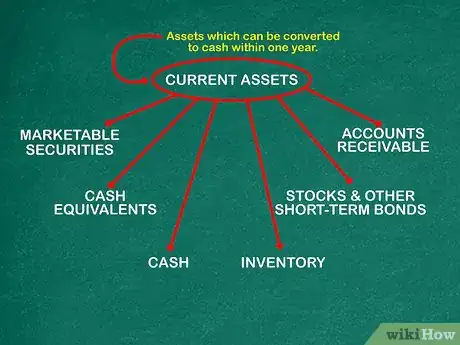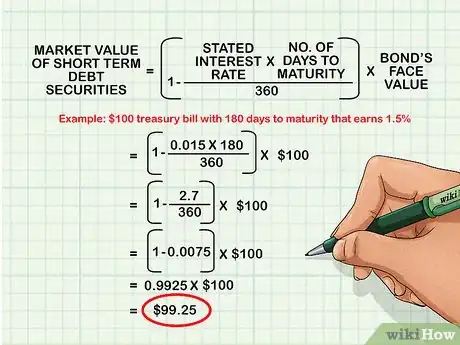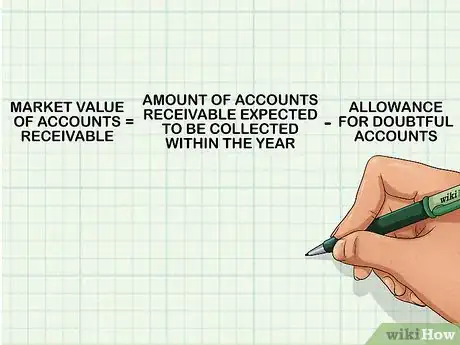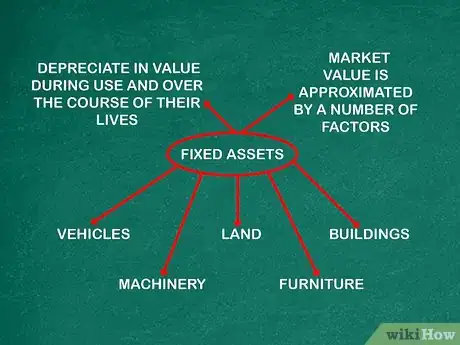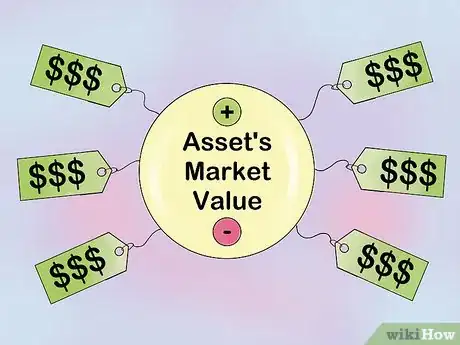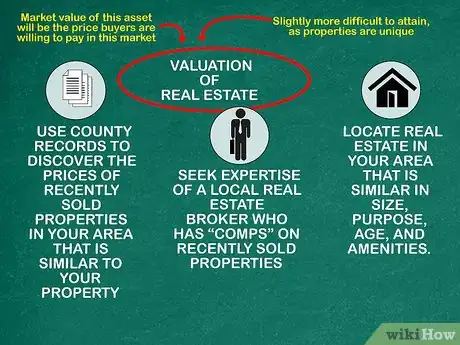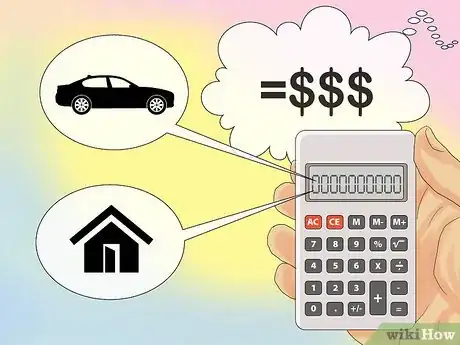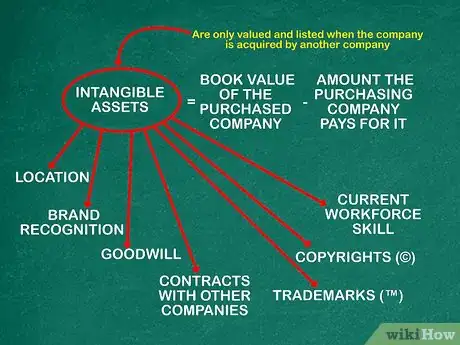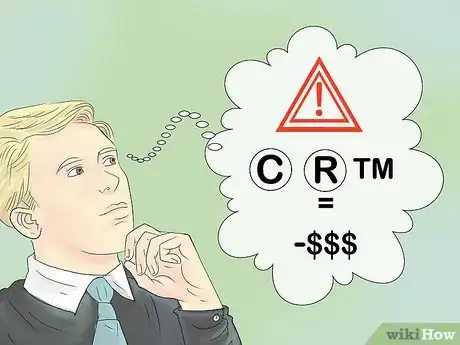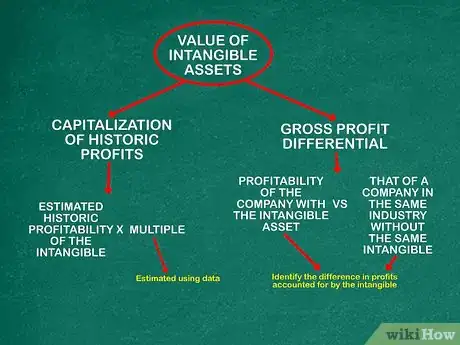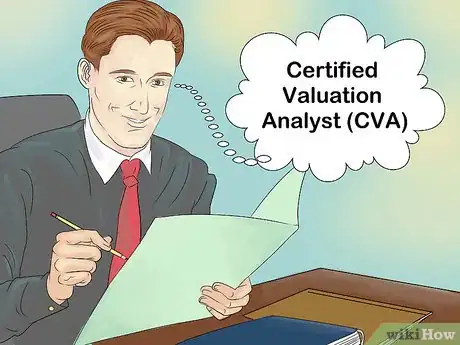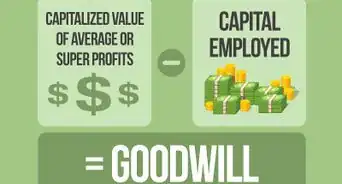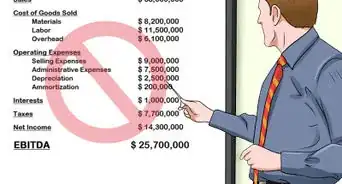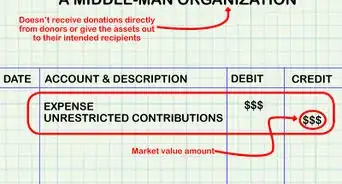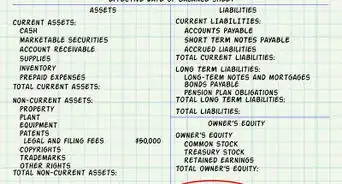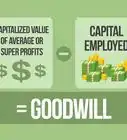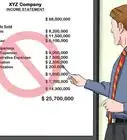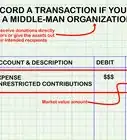This article was co-authored by Cassandra Lenfert, CPA, CFP®. Cassandra Lenfert is a Certified Public Accountant (CPA) and a Certified Financial Planner (CFP) in Colorado. She advises clients nationwide through her tax firm, Cassandra Lenfert, CPA, LLC. With over 15 years of tax, accounting, and personal finance experience, Cassandra specializes in working with individuals and small businesses on proactive tax planning to help them keep more money to reach their goals. She received her BA in Accounting from the University of Southern Indiana in 2006.
There are 9 references cited in this article, which can be found at the bottom of the page.
This article has been viewed 115,384 times.
An asset is anything a company owns that has a positive monetary value. Assets include things like cash, real estate, inventory, and equipment, but also include less tangible things, such as goodwill and reputation. While all these assets have a value, it is not always easy to put a price on them. Generally accepted accounting procedures (GAAP) have tried to bring some clarity to this because of the importance of determining value at the sale and purchase of assets or of a business. "Book Value" refers to the actual price paid for an asset after you deduct depreciation on an asset. In contrast, "Asset Market Value" refers to the price of an asset in the current market for that asset. The Book Value is the value of assets shown on a balance sheet, but it has little or nothing to do with the Asset Market Value. More importantly, asset market value can be used to value a company or determine an individual's net worth. Obviously, knowing how to calculate asset market value correctly is vital information for a company or individual.
Steps
Determining the Market Value of Current Assets and Securities
-
1Define current assets. Current assets are those assets which can easily to converted to cash within 1 year. These include cash, cash equivalents like bank accounts, marketable securities, accounts receivable, inventory, and other easily-convertible assets.[1] This definition also includes securities like stocks and short-term bonds.
-
2Find the market value of cash and cash equivalents. The market value of this category, which includes domestic and foreign currency, bank accounts, short-term debt securities like treasury bills, and certificates of deposit is the most easily calculated of any asset. This is because pricing already exists for these assets.[2]
- For cash, bank accounts, and certificates of deposit, just used their stated value. $1 = $1 in market value.
Advertisement -
3Determine market value for stocks. For investments such as publicly traded stocks, mutual funds, and exchange-traded funds, determine the market value by looking it up on the stock exchange where the investment is traded. There are many online tools to do this, such as Yahoo Finance (https://finance.yahoo.com/lookup/).
- If you are trying to determine the value in the past, you can also look up the historic value for the date in question.
-
4Determine market value for short term debt investments. Look up the value online for government bills and bonds that are traded on the open market. Yahoo Finance (https://finance.yahoo.com/) is a good tool for valuing these types of investments. Other investments may be trickier. For instance:
- For treasury bills, the market value can be calculated using the stated interest rate and the number of days until maturity. For example, if you have a $100 treasury bill with 180 days to maturity that earns 1.5%, start by multiplying the interest rate by the days to maturity to get 2.7 (0.015*180). Divide this number by 360 (an approximation of the number of days in the year) to get 0.0075. Then, subtract this number from 1 to get 0.9925. Finally, multiply that by the bond's face value, $100, to get $99.25, the market value of the bond.[3]
-
5Find the market value of accounts receivable. The market value here is simply the value of the accounts expected to be received within one year. Simply determine which accounts are expected to be paid within the year (which should be most of them). However, some accounts may never be paid. To arrive at a final value, subtract the expected value of these uncollectible accounts (known as the allowance for doubtful accounts) from the amount of accounts receivable expected to be collected within the year.[4]
- For more information, see how to determine net accounts receivable
-
6Value your inventory. In theory, inventory should be easily convertible and simply valued as the market sale price times the quantity of inventory. In reality, however, the market value of inventory depends on how easy it will actually be to sell the inventory and what price can be attained in the market. Inventory can be easy to unload at full price or alternately can be sold to a collection agency at near-cost. This depends on how healthy the company is and its market. The gist of this is that inventory market value is murky at best and its valuation is best left to the discretion of an accountant or valuation specialist.[5]
- To get an idea of the value of your inventory, you may want to investigate at what price other companies are offering similar products. Even looking at websites like eBay or Amazon can give you an idea of comparable prices.
Calculating the Market Value of Fixed Assets
-
1Know what fixed assets are. Fixed assets are those that are more difficult to convert into cash than current assets. In the case of a business, fixed assets are those used in the operation of the business or the production of product such as machinery, vehicles, land, buildings, and furniture. The nature of most fixed assets is such that they depreciate in value during use and over the course of their lives; that is, you can't usually sell them for a value equal to or greater than you originally paid (exceptions include real estate). In any case, their market value is approximated by a number of factors, rather than known directly.[6]
-
2Locate similar items that have recently sold in your area. Use resources such as blue-books, websites, and auction sites to see what people are paying for these items. The more comparable items you can locate, the more accurate your determination of the market value will be. The actual sales prices tend to form a narrow range of prices that define the market value, that point of equilibrium where buyer and seller interests come together.
-
3Average the recent sale prices, and list this value as the market value of your asset. Make adjustments as necessary. For example, lower the price to reflect possible damage to the item. Similarly, raise the price to reflect some unique quality of the item, for example, a highly desired color or a limited number edition.
-
4Value real estate. The valuation for land and buildings can be slightly more difficult to attain, as properties are unique. Start by locating real estate in your area that is similar in size, purpose, age, and amenities. Then, use county records to discover the prices of recently sold properties in your area and similar to your property.[7]
- Additionally, seek expertise of a local real estate broker who has comps (detailed descriptions of comparable properties) on recently sold properties.
- Use such resources to determine the narrow range within which buyer and seller will agree. The market value of this asset will be the price buyers are willing to pay in this market (that is, this geographical area, this price range, this product detail).
-
5Have the asset professionally appraised. For very unique assets or transaction that require more exact values, you should have the asset appraised. A professional appraiser can give you a more concrete market value and add credibility to your valuation. However, weigh the cost of the appraisal against how much you stand to gain from valuing the assets. In general, appraisals should only be done for more valuable assets like real estate.
Estimating the Market Value of Intangible Assets
-
1Define intangible assets. Intangible assets are not listed on balance sheets for the original company. Instead, intangible assets are only valued and listed when the company is acquired by another company. These assets account for the difference between the book value of the purchased company and what the purchasing company pays for it (which can either be more or less than book value).[8] Some examples of intangible assets include:
- Goodwill, which refers to the value of your business's name: your standing and reputation within the community, a loyal customer base, good employee and customer relations, etc.[9]
- Trademarks, which identify a product or service as property of your specific company.[10] A trademark cannot be used without your permission, but may be sold or temporarily licensed to other companies. An example of a trademarked asset would be an original logo, such as the Starbucks mermaid or Nike swoosh.[11]
- Copyrights, which protect intellectual property, such as software, art, films, original concepts, etc.[12] Copyrights are in effect only for a certain number of years before the property becomes public domain and can be used by anyone.[13]
- Brand recognition, which considers the extent to which the general public can identify your company or product based on your logo, colors, slogans, or other marketing tools.[14] McDonalds, for instance, can easily be identified by the "golden arches" symbol and by its slogan "I'm lovin' it." Brand recognition also presents the opportunity for a franchise.
- Patents, which give patent holders the sole rights to sell, use, or manufacture an invention (as granted by the government).
- Other examples include location, current workforce skill, and contracts or agreements with other companies, which can all add value to your company.
-
2Be careful not to underestimate the value of intangible assets. By nature, these values are more difficult to identify. Intangible assets represent a certain level of income potential that is difficult to predict, but which is understood to have a very real impact on the business and, thereby, the value of that business. After all, if you are selling your company, you want to demonstrate as much value of your assets as possible.
-
3Value intangibles. While intangibles can never be valued exactly until a company is sold, you can still perform approximations of their market values. These approximations rely on studying the effect the intangible has on the company and its performance, such as profits seemingly generated by a brand name. Commonly accepted methods include the following:
- Capitalization of historic profits. This method multiplies the estimated historic profitability of the intangible by a multiple. The multiple is also estimated using data like sales trends, market leadership, and brand recognition data. This method is very subjective and relies on many assumptions.
- Gross profit differential. This method compares the profitability of the company with the intangible asset (for example a brand name) against that of a company in the same industry without the same intangible and seeks to identify the difference in profits accounted for by the intangible.
-
4Hire a professional. Intangible valuation can be very difficult, as it incorporates many different field of study into one assessment of value. An assessor must consider market conditions, future trends, social context, sales and profit figures, and legal circumstances to reach an educated market value. Therefore, it is usually best to leave this type of valuation to a professional.
- The type of valuation you have done will depend on the purpose of the valuation. For example, if you want to sell a company you own, you will likely want it valued as highly as possible. If you are valuing assets for estate tax purposes, you likely want them valued as low as possible.
- The valuation process can be very subjective so it's best to use a valuation professional who specializes in the type of valuation you need. Generally, a CPA (Certified Public Accountant) with an ABV (Accredited in Business Valuation) designation can provide a valuation.
Expert Q&A
Did you know you can get expert answers for this article?
Unlock expert answers by supporting wikiHow
-
QuestionHow do I compute capital gains?
 Cassandra Lenfert, CPA, CFP®Cassandra Lenfert is a Certified Public Accountant (CPA) and a Certified Financial Planner (CFP) in Colorado. She advises clients nationwide through her tax firm, Cassandra Lenfert, CPA, LLC. With over 15 years of tax, accounting, and personal finance experience, Cassandra specializes in working with individuals and small businesses on proactive tax planning to help them keep more money to reach their goals. She received her BA in Accounting from the University of Southern Indiana in 2006.
Cassandra Lenfert, CPA, CFP®Cassandra Lenfert is a Certified Public Accountant (CPA) and a Certified Financial Planner (CFP) in Colorado. She advises clients nationwide through her tax firm, Cassandra Lenfert, CPA, LLC. With over 15 years of tax, accounting, and personal finance experience, Cassandra specializes in working with individuals and small businesses on proactive tax planning to help them keep more money to reach their goals. She received her BA in Accounting from the University of Southern Indiana in 2006.
Financial Advisor & Certified Public Accountant The capital gain on the disposition of an asset is calculated by subtracting the cost basis of the asset from the proceeds received from the sale. For example, if you purchase a stock for $50 then sell it later for $120, the capital gain on the sale would be $70 ($120-$50). If you are selling an asset that you have claimed depreciation expense for tax purposes, such as a condo that you rented out, you would reduce the cost basis by the depreciation expense and increase the cost basis for improvements you have made to the property while you owned it. Example: you purchased a condo for $100,000 and rented it out for 5 years. Each year, you claimed depreciation expense of $3,600 for a total depreciation expense claimed of $18,000. Before you sell the property, you make improvements to the kitchen totaling $4,000. Your cost basis in the property is $100,000-$18,000 + $4,000 = $86,000. If you sell the condo for $125,000, your capital gain is $39,000 ($125,000 - $86,000).
The capital gain on the disposition of an asset is calculated by subtracting the cost basis of the asset from the proceeds received from the sale. For example, if you purchase a stock for $50 then sell it later for $120, the capital gain on the sale would be $70 ($120-$50). If you are selling an asset that you have claimed depreciation expense for tax purposes, such as a condo that you rented out, you would reduce the cost basis by the depreciation expense and increase the cost basis for improvements you have made to the property while you owned it. Example: you purchased a condo for $100,000 and rented it out for 5 years. Each year, you claimed depreciation expense of $3,600 for a total depreciation expense claimed of $18,000. Before you sell the property, you make improvements to the kitchen totaling $4,000. Your cost basis in the property is $100,000-$18,000 + $4,000 = $86,000. If you sell the condo for $125,000, your capital gain is $39,000 ($125,000 - $86,000).
References
- ↑ http://www.investopedia.com/terms/c/currentassets.asp
- ↑ http://www.investopedia.com/terms/c/currentassets.asp
- ↑ http://www.fool.com/knowledge-center/2016/01/05/how-to-calculate-the-price-of-treasury-bills.aspx
- ↑ http://www.investopedia.com/terms/c/currentassets.asp
- ↑ http://www.investopedia.com/terms/c/currentassets.asp
- ↑ http://www.slideshare.net/KapilChhabra1/valuation-of-fixed-assets
- ↑ http://www.investopedia.com/ask/answers/072915/how-market-value-determined-real-estate-market.asp
- ↑ http://pages.stern.nyu.edu/~adamodar/New_Home_Page/littlebook/assetvalue.htm
- ↑ http://www.investopedia.com/terms/g/goodwill.asp
